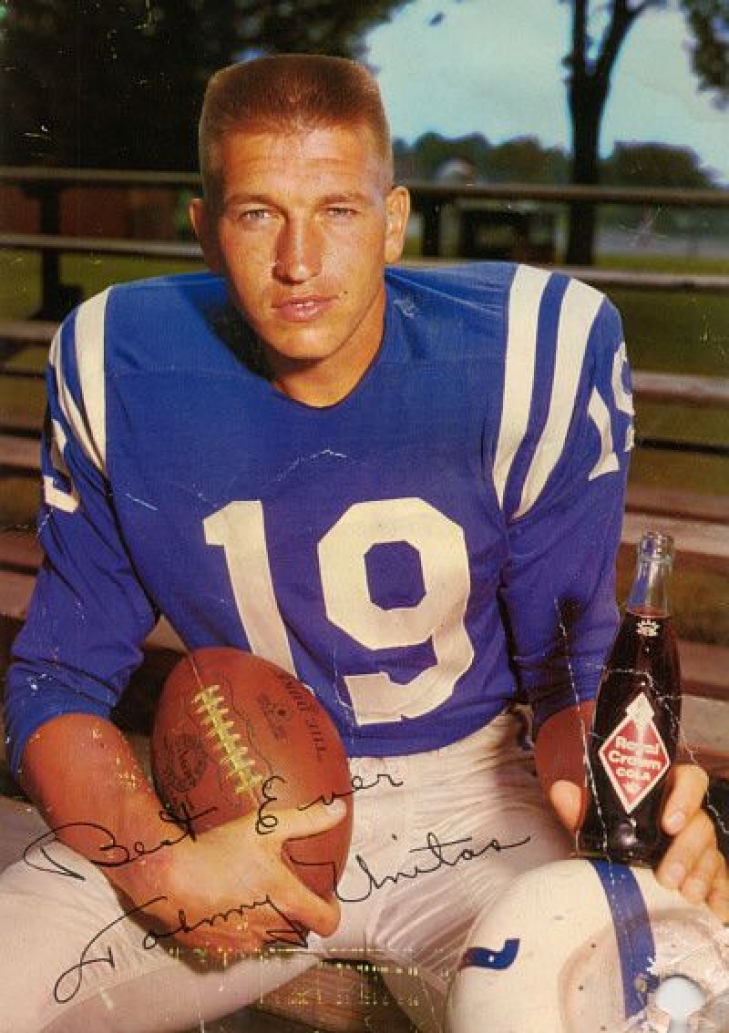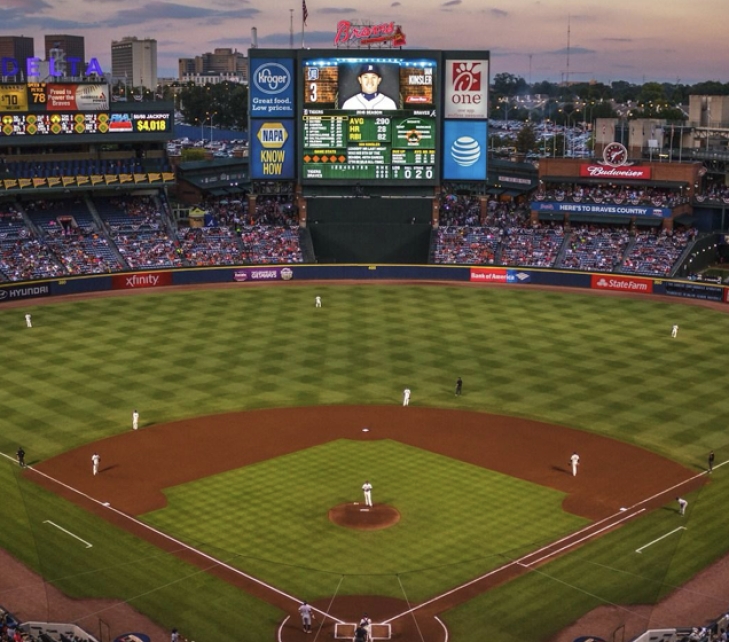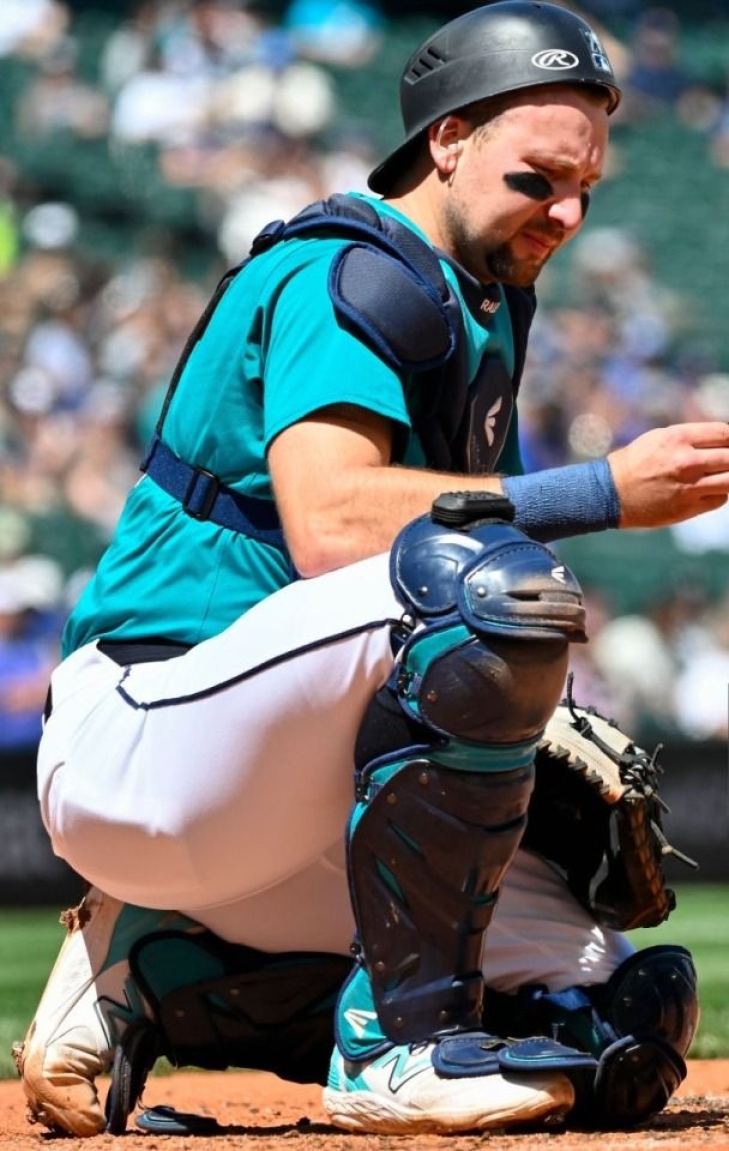
Committee Chairman
The Pro Football Hall of Fame Revisited Project: 1979 Semi-Final VOTE
1979 SEMI-FINAL RESULTS:
Thank you for your participation in the Pro Football Hall of Fame Revisited Project. If you are unaware of what that is, we acted like the PFHOF had its first class in January 1946.
We have completed the years up to 1978.
For “1978,” a Preliminary Vote with nearly 100 players whose playing career ended by 1972. We are also following the structure in that players have 20 years of eligibility, and if they do not make it into the Hall, they are relegated to the Senior Pool.
Each voter was asked to select 25 names from the preliminary list, and the top 25 vote-getters were named Semi-Finalists.
A week later, the voters were asked to pick 15 names from the 25 Semi-Finalists, and next week, they will pick five from the remaining 15. We will continue this process on a weekly basis until we catch up to the current year.
32 Votes took place, with the top fifteen advancing.
This is for the “Modern Era”
Bold indicates they advanced to the Finals:
|
Player |
Year of Eligibility |
Vote Total |
|
Dick Butkus LB |
1 |
32 |
|
Johnny Unitas QB |
1 |
32 |
|
Larry Wilson S |
2 |
30 |
|
Don Maynard E-FL-HB |
1 |
28 |
|
Leroy Kelly RB |
1 |
24 |
|
Tom Sestak DT |
6 |
21 |
|
Billy Shaw G |
5 |
19 |
|
Eddie Meador DB |
4 |
19 |
|
Dick LeBeau DB |
2 |
18 |
|
Gene Hickerson G |
1 |
18 |
|
Chuck Howley LB |
1 |
18 |
|
Bob Brown T |
1 |
18 |
|
Abe Woodson DB |
8 |
17 |
|
Johnny Robinson DB-FL-HB |
3 |
17 |
|
Alan Ameche FB |
14 |
16 |
|
Jimmy Patton DB |
8 |
15 |
|
Joe Fortunato LB |
8 |
15 |
|
Del Shofner E-DB |
7 |
15 |
|
Billy Howton E-FL |
11 |
14 |
|
Les Richter LB-C |
12 |
12 |
|
Gene Lipscomb DT |
12 |
11 |
|
Billy Wilson E-FL |
14 |
10 |
|
Pete Retzlaff E-HB-TE |
8 |
8 |
|
Roger Brown DT |
5 |
7 |
|
Gino Cappelletti FL-SE-DB-WR-K |
4 |
7 |
|
Dick Schafrath T-G-DE |
3 |
1 |
This is for the “Senior Era”
*Bold indicates they advanced to the Finals:
|
Player |
Year of Eligibility |
Vote Total |
|
Pat Harder |
1 |
20 |
|
Woody Strode |
5 |
15 |
|
Ward Cuff |
7 |
14 |
|
Marshall Goldberg |
6 |
13 |
|
Whizzer White |
13 |
12 |
|
None of the Above |
|
3 |
This is for the “Coaches/Contributors Era”
*Bold indicates they advanced to the Finals:
|
Player |
Year of Eligibility |
Vote Total |
|
COACH: Weeb Ewbank |
3 |
27 |
|
OWNER: Art Rooney |
1 |
24 |
|
OWNER: Charles Bidwill |
10 |
14 |
|
COACH: Greasy Neale |
10 |
10 |
|
OWNER: Dan Reeves |
10 |
5 |
We will post the Class of 1979 Pro Football Hall of Fame Revisited Project next Saturday.
Thank you to all who contributed. If you want to be part of this project, please let us know!
MMA Fight Week Meets Casino Promotions
Fight week's electric energy pairs perfectly with casino deals, letting operators boost fan engagement while rewarding loyal supporters through high-octane betting experiences.
MMA Fight Week: Casino Promotions for Hardcore Fans
Introduction
MMA fight week also creates a heart-pounding nightclub atmosphere for hardcore fans. Incorporating Genome10k promotions into this environment gives operators the chance to deepen engagement, incrementally drive revenue, and reward the most loyal fans. With real-time odds displays, tiered status levels, surprise bonuses, and customizable “fight week” bonuses, casino loyalty programs can provide promoters with immersive, multi-tiered campaigns tailored to combat sport enthusiasts.
Aligning Casino Mechanics with Fight Week Energy
Fight week commences with a press conference and culminates with the fight night spectacle. The pacing and buildup are designed to keep suspense at a peak, the same way promotions keem cassino floor excitement high. The combination of these two realms can be achieved through:
- Dynamic Timing: Activating promotions at pivotal countdown slots (72 hours to fight, final 24 hours, etc) mirrors the excitement of slot machine bonus rounds.
- Thematic Resonance: Fight themed visuals and audio (bell rings, referee counts) casino talker UIs and pit table shufflers and branded slot machines bolster suspension of disbelief.
- Community Momentum: Rallying the audiences to collectively cheer, live, virtually, or otherwise, to fuel community jackpots and leaderboard challenges amplifies the immersion.
Ensuring these alignments allows casino activations to feel like organic extensions of fight week rather than last minute additions.
Tiered Loyalty Structures for MMA Fans
To keep high rollers participating, casinos employ loyalty tiers Bronze, Silver, Gold, and Platinum, each granting incremental perks.
For MMA fight week, promotions have the ability to classify fans into different categories based on historical spend during fight week, estimated betting activity, or themed loyalty point systems:
- Bronze “Fight Card” Tier: Gaining access to this tier is as simple as registering online or placing a first odds wager; bonuses include participation in daily trivia fight week quizzes with small reward chips.
- Silver “Weigh-In Warrior” Tier: Granted after an attendee participates in two fight week sessions, either virtually or in-person. This tier grants access to promotional digital collectibles and greater odds on preliminary card earnings.
- Gold “Main Event” Tier: Granted after surpassing a certain threshold of fight-week spending on wagers or earning. It unlocks a dedicated hotline serviced by a live customer care representative for inquiries on Bet odds, as well as, prioritized seating in sportsbook lounges and complimentary entrance into virtual ringside watch-parties.
- Platinum “Octagon VIP” Tier: This tier is granted to bulk bettors or purchasers of packaged deals. It also encompasses private livestream meet and greets with fighters, customized prop bet challenges, and participation in a high-odds jackpot community wager.
Thematic and branding of MMA icons are coupled with progress screens of rewards and tier progression maps—fan pathways parallel casino comp systems.
Unexpected prizes increase excitement more so than fixed rewards being offered. Integration of Tiered Variable-Ratio Bonuses are applicable at fight-week casinos for the following:
- Mystery Bet Boosts: Placing a random number of five to eight wagers triggers an unexpected multiplier for the next under-card prop bet.
- Randomized Parlay Spins: Completing a mini-parlay “The right fighter winning by submission” activates a spin to win wheel with prizes such as free bets, boosts, or even NFTs of highlights from prior fights.
- Captivating Standby Times: Animated countdown timers extremely stylized like the octagon shaped slot machine ramp up suspense before mystery rewards. This is akin to the anticipation prior to the closing of the pre-fight cage door.
These mechanics provide fans with meaningful and surprising bonuses while staying engaged throughout the entirety of fight week.
Real-Time Odds Displays and Community Jackpots
Dynamic odds and community pots are best served by casinos. For example, sportsbooks during fight week can use:
- Live Odds Walls: Screens placed in casino lounges or mobile apps to display and update fight props like round-predictive outcomes and methods of winning in the same way live roulette boards function.
- Live Updated Dynamic Parlay Boosts: Supporting enhanced participatory features such as voting for fight winner, method of victory, and bonus rounds. These can occur during live events enabling real-time odds update mirroring live-streaming.
- Beat the Benchmark: Real-time tracking of fight-week scoreboards based on correct predictions placed by users. Users are awarded as they reach the set mark and can win escalating rewards like spins or VIP accounts.
Collaborative community jackpots, along with leaderboards, mimic the excitement of hitting a big progressive slot win and unlock a new level of shared participation.
Technical Implementation and Lineup Data Integration
Unified Loyalty and Betting Platform
The integrated fight-week-casino ecosystem requires:
- Centralized CRM—consolidates fan profiles, engagement markers for fight-week, wagering history, tier status, and overall engagement.
- Data Stream Ingestion—odds updates, bet placements, weigh-in results, and fight start times should all trigger promotional activity immediately.
- Recommendation Engine—issues personalized prop bets and bonuses using machine learning and Fan Activity Prophecy Tier (FAPT) modeling based on user behavior, past performance, and tier level.
The sportsbook mobile and kiosk applications sync all functions through a central CRM allowing agile, unified fight-week deadline merchandising.
Analytics and Optimization
During engagement-boosting bonus spins, casinos continuously adjust bonus win frequency and real-time profit indicators. During fight-week operations, casinos should:
- Engagement Metrics—bonus spin redemption, parlay completion rates, and tier upgrade velocity.
- Promotion A/B Testing—comparative conversion uplift of various mystery-reward frequency or jackpot threshold levels.
- Odds Boost A/B Testing—enhanced boost magnitude and real-time wager volume combined with profit margin timing.
Iterative design based on these constraints will delight fans while yielding healthy margins.
On-Site Activation and Player Experience
The match between two giant opponents during MMA Fight Week brings electrifying energy, as player promotions at casinos give hardcore fans the hope of meeting their favorite fighters. With the champions cup on the line, the semi-final matchup becomes a crucial away battle for athletes looking to reclaim their dominance. As the lineup of events unfolds, fighters aim to avoid injury while casinos roll out high-stakes experiences—blending the intensity of football-level fandom with the thrill of combat sports.
Branded Lounges With Watching Bays
Change sportsbook areas into football fan zones for specific fighting weeks:
- Octagon-Shaped Bonus Stations: Payoff bonus areas where fans can turn bet wheels in sections shaped like the cage.
- Tier-Exclusive Areas: Exclusive Platinum lounges offer promotional draw terminals of high-value mystery draws.
- Interactive Walls: touch interfaces showing live bet windows, tier and promotion countdown timers synced to the fight clock refresh.
These functions integrate the casino and sports venue, creating a complete fight-week experience for fans.
Integrated Broadcast Overlays
During the official fight feeds shown on large venue screens or streamed over apps, overlay casino marketing:
- Pop-Up Bonus Prompts: Claim instant spin bonuses whenever weigh-in results or trends fight hashtags.
- Dynamic Parlay Bundles: Timed thematic multi-bet bundles at better odds, e.g. “Main Event Finishers Parlay”.
- Live Community Counters: Real-time displays for updated jackpot accumulation bars and last chance wagers to secure potential wins.
The integration of casino elements into sports broadcasts further enhances the connection between the action and the gambing frenzy.
Responsable Gaming and Ethics of Gambling
Transparent Terms and Conditions Skipping Paywalls
Transparent RTP and odds displays are a requirement of the casinos. For sportsbooks and fighting week promotions:
- Publish Prop Bet Odds Clearly: Offer decimal or American odds next to each market and provide brief descriptions of implied probabilities.
- Disclose Bonus Odds: Personally, I would appreciate more transparency e.g., “mystery spin has a 60% chance of free $5 bet, 10% chance of 25$ bet”
Transparent disclosures let the user make reasoned decisions instead of impulsive ones.
Safe Play Tools
To prevent overextension:
- Spending Limits: Users are able to set quotas for prop bets and bonus spin attempts on a daily or fight week basis.
- Self Exclusion Options: Users easily opt out of conflicting promotion and bonus eligibility for that specific time frame.
- Responsible messaging: Embed reminder and support for problematic play issues while promoting fun, not profit.
Case Study: Champion Fight Week at High-Stakes Casino
High Stakes Casino implemented an MMA fight week campaign which stemmed from:
- Tier Launch: Bronze through Platinum status were revealed via targeted email blasts and in-app banners 3 weeks prior.
- Mystery Parlay Spins: Bronze members earned one spin after every five fight week bets, silver members earned two and so on leading to a 20% lift in parlay handle.
- Community Knockout Jackpot: A portion of the fight-week betting revenue, specifically 1%, was used to fund a $50,000 jackpot which was given to a random Platinum member after the main event. Announcements regarding the jackpot were made live during broadcasts.
Some of the outcomes included a 35% increase in fight-week new registrations, an increase of 28% in total handle compared to the previous title fight, and a 15% increase in ancillary F&B spend by tiered members.
Future Directions and Innovations in Match Team Quests
AI-Driven Personalization
Real-time targeting of specific audiences using advanced analytics will focus on promotions to be pushed out during fight week.
- Predictive Parlay Offers: Based on historical data of betting patterns and the ongoing fight, prop bets will be suggested in bundles at an optimal level.
- Dynamic Odds Adjustment: Enhanced boosted odds require balanced risk. Ongoing recalibrations of models in real time refine boosted odds.
Immersive XR Experiences
Extended reality (XR) has the ability to integrate virtual slot reels and leaderboard displays into live streams or through AR glasses worn in the arena, thus turning traditional fight coverage into interactive crossovers with casino elements.
Conclusion
Incorporating a casino’s promotional strategies gives the MMA fight week an blank canvas to work with – structured multi-tiered loyalty programs, community jackpots, variable-ratio payoffs, real-time, perhaps even live-streamed, displays of odds and active betting can foster greater attendance and revenue. By using data-driven personalization while strategically aligning timing devices with rhythms of the fight week alongside strong responsible gaming measures, operators can tap into immersive, exhilarating experiences that honor the passion for combat sports alongside the industry’s finest of casino entertainment.
As advancements in AI and XR technology continue to develop, the integration of MMA spectacle with casino elements will deepen even further, creating cutting-edge promotions designed for the most dedicated fans.
The high-stakes showdown of MMA's biggest tournament in 2025 is set for high-stakes action, where casino promotions for hardcore fans mirror the thrill of the octagon itself. As champion fighters prepare for their crucial encounter in the stadium, casinos roll out premier VIP packages - offering high-rollers front-row seats and meet-and-greets with veteran contenders like they're betting on the top spot. This epic clash between formidable rivals creates a fierce atmosphere where fight fans and gamblers alike chase the same quest: to experience the prowess of these standout athletes up close. The head coach of each team approaches fight week with relentless determination, knowing their lineup's resilience could mean the difference between victory and defeat in this champions league of combat sports. With highly anticipated matchups scheduled through the last four, these tactical warriors and the casinos hosting them create an unforgettable contest - where every punch thrown and every promotion offered carries the crucial weight of a championship cup pursuit.
AL East Dynamics: Yankees Lead, but Blue Jays and Rays Close Behind
The American League East division is once again proving to be a compelling battleground as the season progresses.
While the New York Yankees have established a significant early lead, enjoying a formidable start to their campaign, their position is far from unchallenged.
Unexpectedly, the Toronto Blue Jays have emerged as their closest competitor, defying initial predictions that favored the Orioles and Red Sox as major contenders.
Trailing just behind, the Tampa Bay Rays, a perennial dark horse, continue to defy expectations and maintain a strong presence in the divisional race, setting the stage for a dynamic and competitive season ahead.
The Yankees' Commanding Early Stance
The New York Yankees have made a habit of starting strong in recent years, a pattern evident in both the 2022 and 2024 seasons when they quickly built sizable division leads. This year, their impressive performance has translated into a 5.5-game lead in the AL East, solidifying their position over a third of the way through the season.
The primary objective for the Bronx Bombers will be to sustain this high level of play throughout the entire year, avoiding any significant cooling-off period that might compromise their comfortable advantage. Despite their current dominance, the division is filled with capable rivals eager to close the gap.
Blue Jays Emerge as the Primary Challenger
In a surprising turn of events, the Toronto Blue Jays currently hold pole position among the Yankees' division rivals. While the Baltimore Orioles and Boston Red Sox were initially anticipated to pose the greatest threats in the American League East, Toronto has positioned itself as the Yankees' closest competitor.
The Blue Jays boast the best record among the teams not currently leading the division, showcasing their unexpected strength and resilience in the early stages of the season.
Their consistent play has allowed them to gain a crucial advantage over other hopeful contenders in the division.
As a result, FanDuel MLB odds have begun to reflect a shift in perception, with Toronto now listed among the top potential threats to unseat the Yankees.
The Resilient Tampa Bay Rays
The Tampa Bay Rays, often characterized as a mini-market juggernaut, are consistently hard to discount, typically finding creative ways to remain competitive in the hunt, whatever their circumstances.
After a low point that saw them sink to a 16-21 record following a series against the Phillies, the Rays have mounted a strong recovery, now sitting in second place in the East, just a game behind Toronto. Their ability to bounce back from adversity underscores their scrappy nature and their persistent drive to succeed.
Simpson's Impactful Stint
A significant factor in the Rays' recent resurgence was the out-of-control speed of rookie Chandler Simpson, who objectively helped key their rise during his time in the big leagues. His presence propelled the Rays to an impressive 21-14 record during his tenure with the team.
Simpson's performance included a .285 batting average and 19 successful steals, showcasing his game-changing speed and base-running prowess. His dynamic play greatly altered the Yankees' tactical calculus whenever he was at bat or on the bases.
The Demotion Surprise
Despite his meaningful contributions, Chandler Simpson was inexplicably sent down by the Rays, a move described as a "weird one" that might have led to the team having "shot themselves in the foot" and potentially aided the Yankees. This decision is theorized to be part of the "service time game," a strategy often employed to manage a player's contractual control.
Simpson had accumulated 133 plate appearances but only 123 at-bats, falling just short of the 130 at-bat threshold that officially designates a player as a "rookie" for service time purposes. This shift is difficult to justify purely for baseball reasons and has left observers questioning the team's motivation.
Other Contenders: Red Sox and Orioles
Beyond the immediate top three, the American League East also features the Boston Red Sox and the Baltimore Orioles, both of whom possess the potential to make a run.
The Red Sox currently trail the Rays in terms of games, and on paper, they appear to be the most talented team, boasting a roster of stars and a loaded farm system capable of supplementing a theoretical playoff push.
Meanwhile, the Orioles, who won 103 games in 2023, possess a strong core that could recapture that formidable form and return to respectability, if not outright contention. Early season expectations had indeed pegged both the Orioles and Red Sox as significant American League contenders.
Navigating the Unpredictable Path
The AL East division remains highly dynamic, where positions can shift rapidly. While the Yankees have built a substantial 5.5-game lead, they must maintain their current level of play and consistency to secure the division comfortably.
The Blue Jays and Rays are legitimate threats, with the Rays' recent inexplicable decision regarding Chandler Simpson potentially influencing their trajectory. However, it should be noted that no crystal ball gazing is easy when it comes to the Rays, as they consistently find a way to compete.
NIHOF MLB 2025 Cup Standings: Week 10, JUNE 9
It is with great pleasure that we have brought back the Notinhalloffame MLB Regular Cup, and let us explain how this works:
For every regular-season game, we anointed the best five players with descending points, 5-4-3-2-1.
We know the following:
- The top players for the MLB NIHOF Cup are not always the best in the league, as injuries keep players out of games, and a premium on staying healthy can help pile up points. It also does not hurt to be a top player on an average or mediocre team, as they can amass Cup points more easily than elite players on loaded squads.
- In Baseball, it is more common than in Basketball and Hockey for a player to accrue points with a single Home Run in a game, which favors position players. Starting Pitchers have a hard time with approximately 30-35 Starts and throwing fewer innings than previous generations. This is also true for closers not made for this process.
- Please remember that this is NOT necessarily who we think were the best players this year and does not reflect overall consistency. Treat this the way we did: as a fun process and more of a compilation of temporary statistical domination.
Here is the current top ten after games concluded on June 9.
1. Aaron Judge, New York Yankees: 109 Cup Points in 54 Games. (#1 Last Week). 5.2 bWAR, 62 Runs, 95 Hits, 23 Home Runs, 55 Runs Batted In, .396/.493/.771 Slash Line, 1.264 OPS & 250 OPS+.
2. Pete Alonso, New York Mets: 105 Cup Points in 60 Games. (#2 Last Week). 2.9 bWAR, 41 Runs, 75 Hits, 17 Home Runs, 61 Runs Batted In, .301/.396/.594 Slash Line, .990 OPS & 182 OPS+.
3. Francisco Lindor, New York Mets: 83 Cup Points in 64 Games. (#3 Last Week). 2.4 bWAR, 42 Runs, 73 Hits, 14 Home Runs, 38 Runs Batted In, .283/.354/.488 Slash Line, .842 OPS & 141 OPS+
4. (TIE) Rafael Devers, Boston Red Sox: 79 Cup Points in 68 Games. (#5 Last Week). 2.4 bWAR, 45 Runs, 71 Hits, 14 Home Runs, 57 Runs Batted In, .280/.409/.516 Slash Line, .925 OPS & 157 OPS+.
4. (TIE) Shohei Ohtani, Los Angeles Dodgers: 79 Cup Points in 65 Games. (#4 Last Week). 3.1 bWAR, 67 Runs, 76 Hits, 23 Home Runs, 39 Runs Batted In, .291/.387/.628 Slash Line, 1.015 OPS & 184 OPS+.
6. Cal Raleigh, Seattle Mariners: 77 Cup Points in 64 Games. (#6 Last Week). 3.4 bWAR, 44 Runs, 63 Hits, 26 Home Runs, 53 Runs Batted In, .266/.373/.641 Slash Line, 1.014 OPS & 192 OPS+.
7. (TIE) Jacob Wilson, The Athletics: 73 Cup Points in 64 Games. (Not in the Top Ten Last Week). 2.7 bWAR, 36 Runs, 93 Hits, 8 Home Runs, 38 Runs Batted In, .366/.402/.520 Slash Line, .922 OPS & 159 OPS+.
7. (TIE) Bobby Witt Jr., Kansas City Royals: 73 Cup Points in 66 Games. (#6 Last Week). 3.4 bWAR, 35 Runs, 75 Hits, 8 Home Runs, 37 Runs Batted In, .291/.349/.492 Slash Line, .842 OPS & 135 OPS+.
7. (TIE) Manny Machado, San Diego Padres: 73 Cup Points in 65 Games. (Not in the Top Ten Last Week). 2.6 bWAR, 45 Runs, 78 Hits, 10 Home Runs, 34 Runs Batted In, .320/.382/.516 Slash Line, .899 OPS & 150 OPS+.
10. Freddie Freeman, Los Angeles Dodgers: 72 Cup Points in 56 Games. (#9 Last Week). 2.3 bWAR, 36 Runs, 73 Hits, 9 Home Runs, 41 Runs Batted In, .351/.418/.591 Slash Line, 1.009 OPS & 185 OPS+.
Detroit’s Spencer Torkelson and Washington’s James Wood fell out of the Top Ten.
Notably, 888 baseball players have earned at least 1 point, up from 857 last week.





